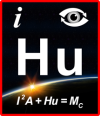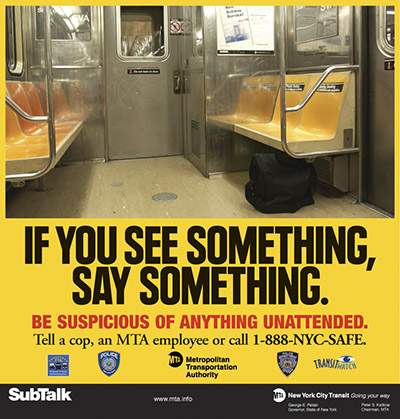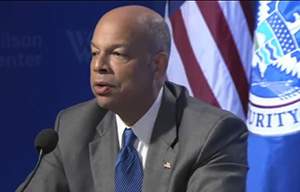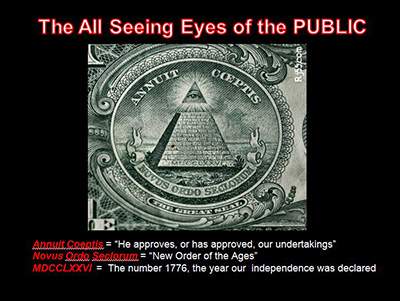HARS - High value information Alert and Reporting System
“The Missing Element”

The current, primary modus operandi in efforts to Get The Bad Guy is through sophisticated data mining efforts (many of which are controversial) and information sharing between the multitude of agencies (such as in the Fusion Centers). It has been specifically concluded, on many levels, that information and tips from the public is one of the most successful means that lead to the apprehension of the Bad Guys. Even so, there have been relatively few efforts to employed to tap into this powerful, pervasive force and include them in the equation. Yes, there has been TV shows such as, “America’s Most Wanted”, and the FBI’s use of digital billboards, all of which have been success, and all of which have been small, individual efforts, either by private efforts or by a single government agency. What’s missing is:

"If you see something say something” poster © Metropolitan Transportation Authority. Used with permission.
- Consolidated, integrated and shared resources (with an emphasis on “shared resources” and not just “information sharing”.
- Large number of display devices and methods to distribute the “wanted” and “high value information”. Increase the number of “eyes-on”.
- Inclusion of the “social media” in the information delivery means and to facilitate more opportunities for the public report what they see.
- Target Information Delivery (TID) of the information (sniper rifle versus shotgun).
- And most importantly, direct inclusion of the public in the entire process. It is the is the critical difference and it is the Missing Element in the equation, it is the HUMAN ELEMENT (Hu) that will make the difference. Psychologically, the public is ready and they motivated and anxious to be involved, to participate, to do something – anything, to be part of the battle. All they need is a weapon – HARS can be that weapon. The Human Element, armed with a weapon, and the weapon is “INFORMATION”, aka, HARS – wow!
- To learn more about the “Missing Element” and its role in the “Most Powerful Equation”, Click here.
Jeh Johnson, Director of U.S. Homeland Security
Address & Conversation at Wilson Center, Director’s Forum

Jane Harmon,
Wilson Center President

Jeh Johnson, Secretary,
U.S. Homeland Security
Jeh Johnson, Secretary of Homeland Security, was sworn into office on December 23, 2013. His first major address was held at the Wilson Center’s, Director’s Forum on February 7, 2014, followed by a short question/answer session with the Wilson Center President, Jane Harman. A few of the high-lights follow, with a focus its relevance to the VSS High value information Alert and Reporting System (HARS). A link to the video is also provided.
Secretary Jeh Johnson – Address (extracts)
In the Homeland Security World, no news is good news, and no news is often the result of the hard work, vigilance and dedication of people within our government who prevent bad things you never hear about, or at least help the public protect itself and recover from the storms we can not prevent.
We must also continue to encourage public participation in our efforts on their behalf through the nationwide Suspicious Activity Reporting initiative and campaign such as “If you see something, Say Something”, which was on prominent display at airports and even at the Superbowl five days ago. Homeland Security is a team effort.
We must continue to be vigilant preparing for and responding to disasters including floods, wildfires, tornados, hurricanes, and most recently, chemical leaks like the one in Elk River in West Virginia that threatened the water supply of 100s of thousands of people. FEMA has come a long way since the days of Katrina. We have improved disaster planning with private and public partners, non-profit organizations and the American people.
We are all connected online and a vulnerability in one place can cause a problem in many other places. So, everyone needs to work on this: government officials and business leaders, security professionals and utility owners and operators.
Ms. Jane Harmon, (Question)
One of the things that was clear to me when I was in the roles I had when I was in Congress was how important the mission of vertical information sharing was to the department. It’s not just a role played here in the federal gov-land, sharing information among the federal agencies, but it is getting information down to first responders who could be police, but also could be private citizens, who smell something strange in the house next door or see something weird anywhere and that mission is going much better. I’m looking at Charlie Allen who at one point, after a legendary CIA career was the head of the intelligence function at DHS. and we talked a lot about this, the Fusion Centers at the local level and so forth. One of the improvements, I think that Congress insisted on was setting up something called the I-TAG, which stands for Inner Agency Threat Assessment and Coordination Group. What it was, was a “teach for America” group of State and Local Law Enforcement folks who would come temporarily, to be detailed by their local departments, to the Department of Homeland Security and the National Counter Terrorism Center, which was created at just about the same time under the Intelligence reform laws in 2004. And they would advise on what the bulletins should look like that go vertically from the Department of Homeland Security, or NCTC, down to first responders, so that first responders could understand what to look for and what to do. Are you aware of these efforts, these outreach efforts?
Secretary Jeh Johnson – Response
I think that given the evolving terrorist threat, which is becoming more decentralized, more defuse, as I said in my remarks, less of a traditional Al Qaeda, or Al Qaeda-like command and control structure, we have to be more concerned about home grown threats, the “lone-wolf” person who is self-radicalized or small group or conspiracy group of people who are self-radicalized. I think that is going to require that we continue to build relationships with first responders… You are also correct that Homeland Security is a team effort that involves the public. We don’t want to scare people, we don’t want to make people paranoid, we don’t want to make people fear each other, because of our differences, but Homeland Security involves public participation; and, if you See Something, Say Something, to repeat a coined phrase., and that can result in very constructive, positive things if there is public awareness what’s in the trash container at the large bus terminal or what’s in the backpack that was left at the gate or something like that. If people are willing to note a suspicious package and report it to the nearest aviation security person or law enforcement officer that can have a tremendous effect. We also have a hope that it never gets that far, but public participation in our efforts are critical, so that we never get to the point where innocent civilians have to take matters into their own hands to save their own lives… I see it, we need to continue to emphasize that this is a collective effort that involves multiple levels of the government and the public.
Video of Complete Address and Conversation - click here.
VSS Comments
The comments by Jeh Johnson and Jane Harmon reflect a number of the basic principles of HARS, thus in effect, validating the vision of HARS and its approach. One of the main points that is clearly articulated, and repeated several times, is the importance of the public in combating terrorism. This is a salient characteristic of HARS, which has guided its design. The public is the “Missing Element” in the combat equation, yet it is only given casual, incidental recognition. There are very little resources committed to this essential element in the anti-terrorism equation. This lack of focus and commitment is the target of HARS. HARS is a tool for the public in partnership with the government resources, both locally and nationally. Please look at some of the other material on this website, and this principle will be further addressed. And, don’t forget to watch some of the videos, such as “Straight Talk” which talks about information sharing, Fusion Centers, “See Something – Say Something”, and much more.


“You see things; and you say, ‘Why?’ But I dream things that never were; and I say, ‘Why not’?” George Bernard Shaw; 1856 -1950, Playwright, critic, political activist.